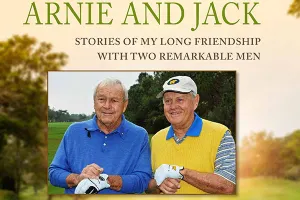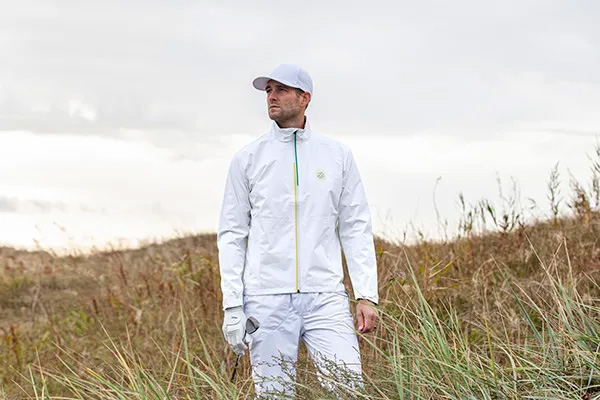When you play a golf course, how much do you really take in? Most players will focus on the course design and layout without giving much thought to how the entire property is laid out. Most local courses have been swallowed up and surrounded by developments that were never part of the original project.
That’s where Augustin Pizá comes in.
“There’s a big difference between a course designer and a golf course architect,” said Pizá. “Anyone with a passion for golf can design a golf course, an architect will create a master plan that takes in the entire project and ties it all together.”
Pizá Golf, already recognized as a world-class architecture and golf course design firm, has now seen their founder named one of the top 100 most creative Mexicans in the world by Forbes Magazine. He has also been named one of the Nine Most Innovative People in Golf by Golf, Inc. Based on his body of work, these and other awards are well deserved.
“There are plenty of golf course designers, they’re honestly all over the world,” said Pizá. “Golf course architects, however, are more rare. I’m definitely the only one in Latin America with a Masters in Golf Course Architecture, and memberships in the European Institute of Golf Course Architects and American Society of Golf Course Architects.”
The edge that gives Pizá and his team is full control of a project from start to finish. That means he’s thinking about the balance between art and science in a project. That science includes studies of agronomy, irrigation, architecture, and technique. That science is mixed with the principles of art including balance, rhythm proportion, and melody.
“There’s no such thing as an ugly golf course. Every golf course is beautiful. You’re out there in the park, you’re walking, you’re listening to the birds and you’re playing the sport that we love. But there is such a thing as a bad design and bad maintenance.”
For Pizá and his team, choosing a project involves considering several things: sustainability, social impacts, economics, and ecology. Pizá said that regardless of the size of the project – resort, championship, or municipal course – he takes those things into consideration each and every time.
“In today’s world, a golf facility needs to have multiple revenue streams. It’s easier to think about adding things like a practice or training facility, a putting complex, or lodging and dining when you’re planning the project instead of trying to add them all later.”
Even though Pizá isn’t a household name – yet – the company’s portfolio is extensive. With projects throughout Europe and Latin America, Pizá has been busy. His latest project, in Mexico City, is “The Pit,” something Pizá calls a “grass sculpture, upon which beautiful golf can be played.”
The Pit is a ‘golf lounge’ centered around a putting complex with four bunkers. The central bunker, sunken with a firepit, makes the facility a place to play and practice, and then a place to relax with friends and family.
“I think my client had a regular putting and chipping green in mind, but I don’t do regular things,” said Pizá when asked about the scope of the project. Regardless, it was a hit and more such golf lounges are in the works in places like San Diego.
In addition to complete projects, Pizá Golf has also made itself available for restoration projects. That’s how the company got into the Cabo San Lucas area of the Mexican Baja. When a hurricane took out the backside of the Cabo San Lucas Country Club, Pizá was called in to help. The results were a major improvement.
“We came in on an emergency basis and re-worked holes 10 thru 16. It’s a big change when you go from the front nine to the back, and I hope we’ll be able to go back and keep working on the property.
Moving forward, Pizá Golf is looking to expand into the United States, having recently opened an office in the San Diego area.
“Designing in the United States will expose more golfers to our work, which we’re excited about.”
The next time you’re planning a golf trip and are trying to decide where to play, make sure you look for a Pizá-designed course. You’ll be pleased with whichever course you choose.



 “I’ve been blessed, really blessed and those friendships came about in totally different ways,” said Mechem. “I met Jack back in 1970 and we’ve been good friends ever since. Arnie I met when I was the LPGA Commissioner and we were very close for 25 or 30 years until he passed away. It’s no exaggeration to say that I’ve never known any two men I respected or cared more for.”
“I’ve been blessed, really blessed and those friendships came about in totally different ways,” said Mechem. “I met Jack back in 1970 and we’ve been good friends ever since. Arnie I met when I was the LPGA Commissioner and we were very close for 25 or 30 years until he passed away. It’s no exaggeration to say that I’ve never known any two men I respected or cared more for.”  “I’m really happy with the way the book turned out,” added Mechem. “I miss Arnie every day, but I’m so happy I still talk with Jack. I’m happy I have such a good memory and writing this book brought back a lot of great feelings.”
“I’m really happy with the way the book turned out,” added Mechem. “I miss Arnie every day, but I’m so happy I still talk with Jack. I’m happy I have such a good memory and writing this book brought back a lot of great feelings.”
 In the words of its inventor, Steven Schnobrich, the Bogey Bag was born out of his own frustrating stretch of golf. “I was joking with my uncle that we’d love to have a punching bag on the golf course so we had something to take our anger out on. So I started coming up with an idea that was barely functional beyond a few good punches.”
In the words of its inventor, Steven Schnobrich, the Bogey Bag was born out of his own frustrating stretch of golf. “I was joking with my uncle that we’d love to have a punching bag on the golf course so we had something to take our anger out on. So I started coming up with an idea that was barely functional beyond a few good punches.” “Sales skyrocketed after that share,” said Schnobrich. “We went through 30 percent of our inventory in no time. The question is whether or not we can sustain that traction.”
“Sales skyrocketed after that share,” said Schnobrich. “We went through 30 percent of our inventory in no time. The question is whether or not we can sustain that traction.”

 When Nico Darras (left) walked off the final green of a one-day mini tour event in Scottsdale three years ago, he was on top of the world. A final hole birdie gave him a score of even par, a number he thought put him on the path to PGA TOUR stardom. He finished in 68th place, 11 strokes off the pace.
When Nico Darras (left) walked off the final green of a one-day mini tour event in Scottsdale three years ago, he was on top of the world. A final hole birdie gave him a score of even par, a number he thought put him on the path to PGA TOUR stardom. He finished in 68th place, 11 strokes off the pace. Golf Blueprint works off a membership model, with players getting different levels of access to practice plans and Moore and Darras. Members can join on a monthly basis, but are rewarded with a free month when they commit to a six-month improvement plan.
Golf Blueprint works off a membership model, with players getting different levels of access to practice plans and Moore and Darras. Members can join on a monthly basis, but are rewarded with a free month when they commit to a six-month improvement plan.


